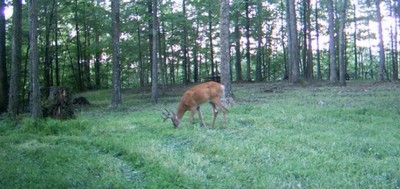The white-tailed deer is the most popular big game animal in the country, but no state has more deer than Texas. Both hunters and landowners there have put in a lot of time, money, blood, sweat and tears managing for and hunting this great animal. Deer management practices, including food plots for whitetail deer, have become a first priority for many sportsmen in this deer-rich state. However, certain regions have more deer than the habitat can sustain. Inadequate food supplies and can reduce the overall health and abundance of native plant communities, but supplemental feeding and food plots can help alleviate some of that stress.
Simply put, plant communities can decline over time from continual deer over-browsing. This impacts fawn production, body weights and antler growth and development. To produce high quality bucks on any property means managing for age, genetics and nutrition. Nutritional requirements, including adequate protein and mineral levels, can be met through sound habitat management, but supplemental forages such as protein pellets and food plots can help maintain deer through the stress periods of both summer and winter.

Food plot plantings are important seasonally to meet specific nutritional needs of white-tailed deer. In Texas, food plots for deer are best suited to the eastern portion of the state, but they will grow anywhere with a little work. Research has found that deer nutrition benefits substantially if at least 1 percent of a property is planted to both summer and winter food plots. Winter food plots assist with deer harvest and spring/summer plots help with buck antler growth, fawn production, and the rearing of fawns by does.
There are many different ecoregions in Texas and the soils and precipitation vary greatly across the state. Always conduct a soil test prior to planting. Spring and summer deer plantings are much more limited compared to the number of winter species that can be used. The best food plot seed choices for east Texas include alyceclover, cowpeas, jointvetch, Lablab, and soybeans.
Alyceclover is a legume that produces an abundance of biomass through the early fall. It can withstand deer browsing pressure better than many other plants commonly found in food plots. It is recommended that alyceclover be planted with another warm season legume that deer love, cowpeas. When planted in combination, the clover helps prevent whitetail from over-browsing of the peas, which are very susceptible to overuse.
If you decided to use cowpeas in a food plot for whitetail deer, realize that there are several varieties available. The most common are Catjang peas, Iron-clay peas, Tory peas, and Wilcox cowpeas. Cowpeas have a wide soil tolerance and grow well in a prepared seedbed with a pH as low as 5.5. Though cowpeas are very adaptable, ensure that you learn how to plant a food plot for deer before buying a sack of peas and heading out to the ranch.
When it comes to cool season food plots for the fall and winter, stick with plant species that are relatively easy to grow and readily available. Species recommended for winter food plots are oats, wheat, and even annual ryegrass. The cereal grains require a low amount of prep work and grow readily in most soils.
Another good deer forage to plant in the fall, especially in east Texas, is brassica, also known as rape. Brassicas come in several varieties and are highly attractive to deer in late winter. Deer will not use them until after the plants freeze, then whitetail will consume them readily. Brassicas are very good for whitetail, averaging 30 percent protein or more! This amount of nutrition will go a long ways towards keeping bucks in your area in good shape throughout the winter.
Ladino clover, commonly planted in the fall for winter food plots, is a species that can give you a lot of mileage. Though planted in late summer/early fall, ladino clover often produces abundant forage through into the summer months. In certain years it may even survive year-round in food plots. This is not always the case, as Texas temperatures typically get quite warm.
Planting food plots for whitetail deer in Texas is a great way to provide supplemental foods. Keep in mind that food plots are only a part of the overall equation. Whitetail deer management also involves habitat management throughout the year and proper harvest management during the fall. Winter food plots are typically more successful in Texas because rains are usually more predictable, but spring and summer food plots can be highly beneficial to nutrition-deprived deer.